Royal Arcerion Submarine Service: Difference between revisions
| Line 69: | Line 69: | ||
Foriegn officers are permitted to partake in the course, with visiting Naval Officers given a bottle of Arcer Gin as a graduation gift upon successful completion, as well as a set of Royal Arcerion Naval Service dolphins, indicating they are an honourary member of the Submarine Service. | Foriegn officers are permitted to partake in the course, with visiting Naval Officers given a bottle of Arcer Gin as a graduation gift upon successful completion, as well as a set of Royal Arcerion Naval Service dolphins, indicating they are an honourary member of the Submarine Service. | ||
== Doctrine and Role == | == Doctrine and Role == | ||
[[File:Maritime commandos.jpg|thumb|Members of 'C' Company, Arcerion Regiment of Maritime Commandos, pose for a photo during the Combat Diver Course, involving operations from a submarine, 2019. ]] | [[File:Maritime commandos.jpg|thumb|Members of 'C' Company, Arcerion Regiment of Maritime Commandos, pose for a photo during the Combat Diver Course, involving operations from a submarine, 2019. ]] | ||
| Line 79: | Line 78: | ||
Submarines in Arcerion predominantly focus on two main mission sets, that being sea lane denial, and subsurface warfare (torpedoes/mines). The first of these missions is focused on maintaining Arcer sovereignty and freedom of movement for the [[Warrington Strait|Warrington]] and Songun Straits. In doing so, the submarines regularly practice the ability to attack merchant shipping, support and logistics vessels of foreign merchant marine services, and the engagement of enemy submarines conducting similar missions. This is also related to the heavy emphasis that the Arcer government and Naval Service Headquarters places on the use of torpedoes and sea mines. The submarines have a variety of sea mines, both predominantly use moored-mines for denying access to ports or shallow-water interdiction of ships, and torpedo mines that lay on the seabed until they recognize the sound signature of an enemy surface vessel and are deployed to engage. Limpet mines are also frequently exercised with the Marine Commandos, and Arcer subs serve as the launch and recovery vessel of choice for such Commando operations. | Submarines in Arcerion predominantly focus on two main mission sets, that being sea lane denial, and subsurface warfare (torpedoes/mines). The first of these missions is focused on maintaining Arcer sovereignty and freedom of movement for the [[Warrington Strait|Warrington]] and Songun Straits. In doing so, the submarines regularly practice the ability to attack merchant shipping, support and logistics vessels of foreign merchant marine services, and the engagement of enemy submarines conducting similar missions. This is also related to the heavy emphasis that the Arcer government and Naval Service Headquarters places on the use of torpedoes and sea mines. The submarines have a variety of sea mines, both predominantly use moored-mines for denying access to ports or shallow-water interdiction of ships, and torpedo mines that lay on the seabed until they recognize the sound signature of an enemy surface vessel and are deployed to engage. Limpet mines are also frequently exercised with the Marine Commandos, and Arcer subs serve as the launch and recovery vessel of choice for such Commando operations. | ||
== Traditions == | |||
There are a number of interesting and historical submariner traditions that do not exist or have equal within the surface fleet of the Royal Arcerion Naval Service. | |||
=== Pirate and Raiding Traditions === | === Pirate and Raiding Traditions === | ||
Depsite the traditional Arcer distaste of pirates and seafaring marauders due to the historical association with indigenous pirates in the Malentine Sea, the Submarine Service opted to coopt the use of the Jolly Roger as its unofficial banner and ship's flag during the Second Great War. Ships returning from successful voyages during | |||
=== Dolphin Insignia === | === Dolphin Insignia === | ||
== Active Submarines == | == Active Submarines == | ||
Revision as of 07:49, 1 November 2022
| Royal Arcerion Submarine Service | |
|---|---|
 Emblem of the Royal Arcerion Submarine Service | |
| Founded | 1917 |
| Country | |
| Branch | |
| Type | Submarine Service |
| Role | Subsurface Warfare, Mine Warfare, Sea-lane Denial, Special Operations, Military Intelligence |
| Size | 9,500 |
| Garrison/HQ | HMANS Chester-on-Moore |
| Nickname(s) | The Silent Service, Krakens |
| Motto(s) | "From the Depths" |
| Colors | Black, Blue, Gold |
| Anniversaries | 1917 (founding) |
| Equipment | 8 SSKs |
| Engagements | First Great War, Second Great War, Final War of the Deluge |
| Website | |
The Royal Arcerion Submarine Service (RASS), the Submarine Service, often referred to as the 'Silent Service' is a major offensive and sea denial component in the Arcer security strategy. It is comprised of two classes of diesel-electric submarines, and was founded in 1917 with the adoption of the first submarines into the Arcer Navy. All of Arcerion's submarines are considered SSNs, or fleet attack submarines, designed to operate in the Malentine and Songun Seas, with a limited ability to conduct power projection operations into the Polynesian Sea through the Songun Straits. The Submarine Service also has the capability to conduct sea lane denial, using torpedoes, undersea-launched cruise missiles, and various types of sea mines. Submarines also operate on conjunction with the Arcerion Special Operations Command (ASOC), to insert and extract special operations teams, conduct strategic reconnaissance and gather signals and electronic intelligence using advanced sensor suites. The Submarine Service maintains an excellent relationship with ASOC due to historical ties and joint operations during the Second Great War. They are also capable of using their integral land-attack cruise missiles in a conventional first-strike capability against a peer opponent.
As of 2026, the navy operated eight attack submarines, three of them the older Dolphin-class, and five the newer Sea Lion-class. The majority of these were deployed in the Songun Area of Operations (SAO), however news reports stated that the ACS Sea Lion, the lead ship of the newest Arcer submarine class, was spotted docked in Howland Governorate conducting Arctic Sea Trials and ice shelf breaching operations.
History
Founding
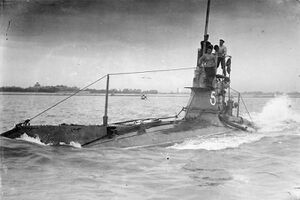
After the First Great War Arcerion Naval headquarters identified the need to a domestic and littoral capability for undersea warfare. This eventually resulted in the purchase of several used submarines from Burgundie, and instructors to train Arcer crews. This was the initial foundation for the Arcerion Academy for Undersea Warfare, which would eventually be renamed in the 1950s to the Subsurface Warfare School (SSWC). Trials on the submarines began and initial drills including crash dives, torpedo warfare, and a nascent mine laying capability to ensure the Arcerion sovereignty over its Exclusive Economic Zone (EEZ) in the Malentine and Songun Seas. Over the next two decades until the outbreak of the Second Great War the Submarine Service continued to grow. Advancements in bubble and wake-free torpedoes began to be introduced, modern High-Frequency Radios, and increased hull protection and dive depths all were developed through native shipyards in Port Gibson, Foxhey Governorate. During this time, the submarine service also practiced with the practice of inserting agents or special forces teams over-the-beach at night, a tactic that would be first used operationally with the reconnaisance of beachheads and landing zones for Operation Lightfoot several years later.
The submarine service consisted of twenty-seven submarines, several submarine tenders and support vessels such as rearmament and refueling ships. Arcerion Naval HQ placed a high emphasis on the ability to rearm, refuel and repair submarines underway at sea away from a safe port-of-call, as the littoral nature of the Malentine and Songun Seas meant that maritime patrol aircraft and sabotage on port facilities could prevent the effective deployment of submarines during wartime.
Second Great War
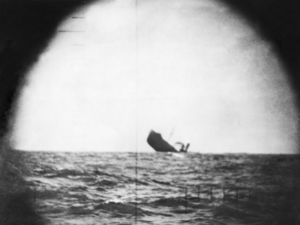
See Also: Operation Forefront During the Second Great War Acer submarines saw extensive action against The Capetian Navy, operating in the Songun Sea and the Polynesian Sea. This was part of the larger Arcer naval mission to deny the Capetian Navy freedom of navigation and freedom of movement in the Songun sea, as well as conduct sea lane denial and commercial raiding to prevent the Cape from receiving the necessary materials and supplies it required to sustain its own war effort. Arcer submarines achieved the most success, as the Arcer surface fleet and Capetian Navy's capital ships never engaged directly in a major battle, the largest being a few smaller flotilla-sized actions between groups of escort ships that happened to make chance contact. Submarines operated under the umbrella mission of Operation Forefront, however under the command of Rear Admiral Lawrence Arthur Coxley, who was acting as Commander, Submarine Force, the Arcer Subsurface fleet operated under Operation Flyhook, which was the sea lane denial, commerce raiding, and minelaying conducted by the submarine force at this time.
Overall, Arcer submarines achieved great effect, sinking dozens of Capetian, Caphirian, and Corummese-flagged merchantmen, as well as a number of smaller Capetian warships of corvette and frigate-size. Moderate damage was done to Capetian major capital ships, although none were sunk, just forced into shipyards for repairs. During the war, four Arcer submarines were damaged by enemy fire or anti-submarine warfare, and an additional two were lost. His Majesty's Arcer Submarine Superior, was destroyed by enemy surface vessels, likely due to depth charges and being unable to surface in 1951. HMAS Typhoon was lost with all hands during an emergency dive rehearsal as part of crew training in the Malentine Sea, where it sunk to 300 meters and was destroyed. The legacy of the war continues to influence modern Arcer submarine doctrine. An emphasis on torpedo and mine warfare are consistently emphasized as the most important aspects of the Service's capabilities, and while it maintains the ability to launch cruise missiles and anti-ship missiles, these are considered of secondary nature.
Antebellum Period
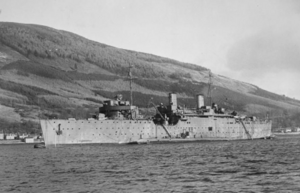
After the Second Great War a drawdown in the submarine service's size was in line with other defense cuts, as the federal government of Arcerion was legislated by the Confederate Parliament to begin a period of austerity to economically recover from the financial stress of the war. The Service's twenty-five submarines were reduced to twelve, and crew training and maintenance budgets were cut in favour of future procurement and long-term success into the 1970s and 1980s to maintain relevance. Despite the risk of being unprepared for a peer conflict in the 1960s, 1970s, and 1980s, this ultimately proved fruitful as the focus on research and development, as well as maintaining a small but professional and specialized officer and NCO corps meant that by the arrival of the modern and incredibly capable Dolphin-class in the early 1980s, the submarine service was again allocated larger budgetary spending and ability for expansion, as the peacetime Naval Service focused on sea lane protection and naval sovereignty and expeditionary movement of land forces was undergoing a period of reshaping.
Modern History
Arcer submarines saw a return to their traditional roles during the Final War of the Deluge, with extensive action against Varshani Navy throughout the course of the conflict. Submarines were the first Arcer naval combatants to engage an enemy in open and armed conflict since the Second Great War. It saw the commitment of the entire Submarine Service, operating out of Joint Naval Station Leighton-Lennox, which was at the time still under construction, and Arcerion operated out of leased bases from the Kiravian Navy. Arcer submarines primarily saw action between the Seneca Islands and Anta Carda, conducting commerce raiding, mine laying, and interdicting Varshani naval vessels.
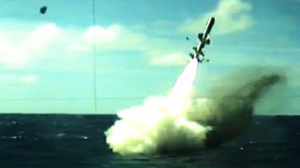
No Arcer submarines were lost or damaged, and a sizeable amount of Varshani commercial and merchant marine shipping was lost to Arcer Submarine engagements during the course of the conflict. Due to the green-water and littoral nature of the service prior to the war, this was the first open water or 'blue-water' deployment on an extensive, and continual basis for much of the Arcer Naval Service. The result was in increased understanding of the difficulties and challenges of operating under such conditions, and required a rethinking of the Service's underway and at-sea replenishment of submarines. While the doctrine was not fundamentally changed, the Service acknowledge that it was considerably more difficult to conduct open sea missions of this nature. The war against Varshan also saw the first employment of land-attack cruise missiles by the Submarine Service, with the ACS Gibson engaging several Varshani targets in the fall of 2020 as part of ongoing targeting of key Varshani infrastructure and command nodes. While submarine's activities are kept classified and not disclosed to the public, the government of Arcerion has acknowledged that members of the Royal Arcerion Naval Service/Arcerion Special Operations Command's Marine Commandos were inserted for clandestine reconnaissance and direct-action missions during the course of the war.
Subsurface Warfare School (SSWC)
The Subsurface Warfare School (SSWC) is one of the most difficult Arcerion officer qualifying courses. It is a mandatory course for all officers, regardless of trade or rank, to complete before they are permitted to serve on an Arcer submarine. It is an extensive 32-week long process that takes place on an Arcer submarine covering a variety of undersea warfare topics. The inaugural course which was only five weeks long, was run in 1918 after the arrival of used submarines from Burgundie. It is widely regarded as one of the most difficult courses in the Arcer military, due to the long hours, cramped and small living quarters, extended periods underwater, and difficult scenarios, usually culminating with one-third of graduates failing or not meeting the standards.
Foriegn officers are permitted to partake in the course, with visiting Naval Officers given a bottle of Arcer Gin as a graduation gift upon successful completion, as well as a set of Royal Arcerion Naval Service dolphins, indicating they are an honourary member of the Submarine Service.
Doctrine and Role
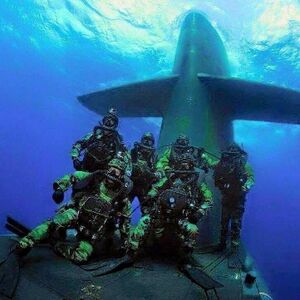
The Royal Arcerion Submarine Service covers a variety of undersea warfare, seabead warfare, and intelligence collection activities to support the foreign and domestic interests of Arcerion. The most modern is with the introduction of the Dolphin-class of submarines in the 1980s with a modern suite of sophisticated electronics for the collection of electronic intelligence. This has resulted in the continuous and clandestine deployment of Arcer submarines around Southern Crona and Sarpedon on missions to collect military intelligence on foreign navies, ports, and commercial facilities. As part of its intelligence collection mandate this often incorporates cooperation with Arcerion's maritime special operations unit, the Arcerion Regiment of Marine Commandos. The Arcerion Special Operations Command has operated off of submarines since the Second Great War, and it is a core component that is expected of the Submarine Service to maintain proficiency on. This culminated recently with operations against Varshan.
Submarines also can covertly communicate using High-Frequency (HF) and Low-Frequency (LF) radios. This is also one of the functions of the Satellite Transmission Stations of the Arcerion National Space Exploration Agency, which is to provide satellite and High-Frequency receive and transmit stations to support the Royal Arcerion Naval Service during expeditionary deployments in the Odoneru Ocean, Polynesian Sea, and Ocean of Cathay.
While historically not used, the use of land-attack cruise missiles is a skill maintained by the Submarine Service, which is usually in conjunction with Special Forces teams embedded for reconnaissance and call-for-fire, to provide correction as well as to laser-designate targets as needed.
Submarines in Arcerion predominantly focus on two main mission sets, that being sea lane denial, and subsurface warfare (torpedoes/mines). The first of these missions is focused on maintaining Arcer sovereignty and freedom of movement for the Warrington and Songun Straits. In doing so, the submarines regularly practice the ability to attack merchant shipping, support and logistics vessels of foreign merchant marine services, and the engagement of enemy submarines conducting similar missions. This is also related to the heavy emphasis that the Arcer government and Naval Service Headquarters places on the use of torpedoes and sea mines. The submarines have a variety of sea mines, both predominantly use moored-mines for denying access to ports or shallow-water interdiction of ships, and torpedo mines that lay on the seabed until they recognize the sound signature of an enemy surface vessel and are deployed to engage. Limpet mines are also frequently exercised with the Marine Commandos, and Arcer subs serve as the launch and recovery vessel of choice for such Commando operations.
Traditions
There are a number of interesting and historical submariner traditions that do not exist or have equal within the surface fleet of the Royal Arcerion Naval Service.
Pirate and Raiding Traditions
Depsite the traditional Arcer distaste of pirates and seafaring marauders due to the historical association with indigenous pirates in the Malentine Sea, the Submarine Service opted to coopt the use of the Jolly Roger as its unofficial banner and ship's flag during the Second Great War. Ships returning from successful voyages during
Dolphin Insignia
Active Submarines
Fast Attack Submarines
Dolphin-class
Sea Lion-class
Future Subsurface Combatant Programme (FSSCP)
Arcerion Submarine Service Record
Record of all acknowledged major kills of ships